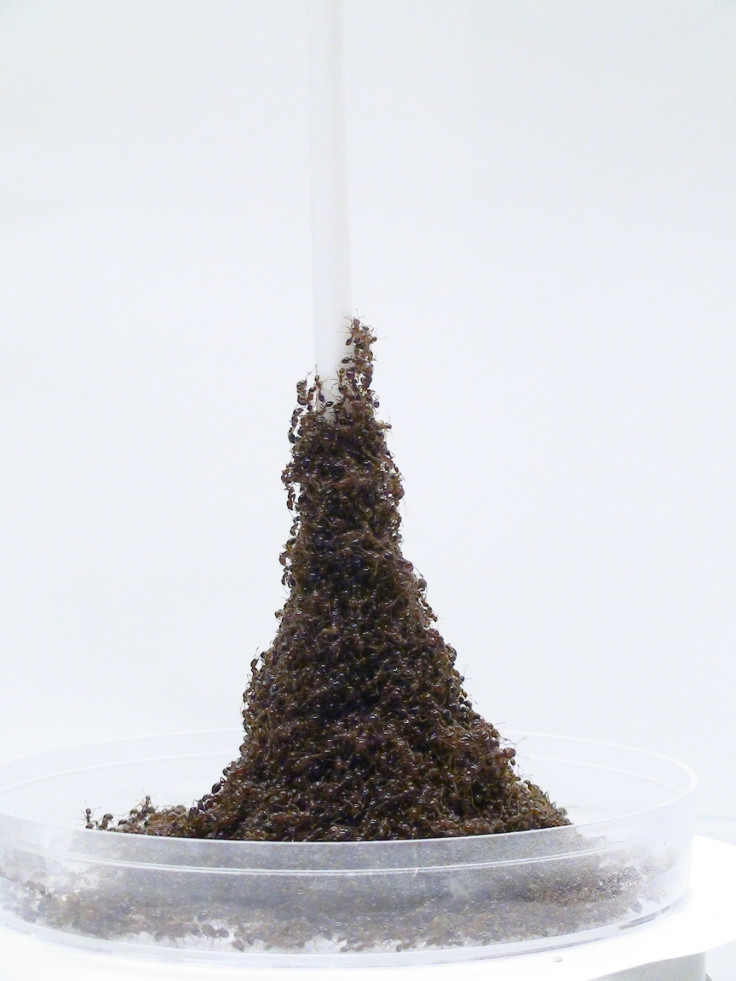Watch ants build a 'miraculous' living Eiffel Tower
Ants could support the weight of 750 of their peers.
When faced with an obstacle, ants do something ingenious – they clamber on top of each other to build a tower tall enough to reach food or they make their escape to another place.
To an ant, the tower is a colossal structure. Up to hundreds of thousands of ants can be involved. The column they form, which is reminiscent of the Eiffel Tower in shape, is the ant equivalent of a human pyramid. It can be as large as 30 ants high, and the tiny insects can happily withstand many hundreds of times their body weight without being crushed.
The discovery that ants could form towers like this, supported by a central pillar, was made entirely by accident. Researchers at Georgia Tech in the US left a camera rolling on a colony of ants for three hours, when it was only supposed to film them for two. They published their surprise findings in a study in the journal, Royal Society Open Science.
"We didn't expect to see anything interesting in that extra hour, so we sped up the video to 10 times real speed," said study author Craig Tovey in a statement. "We were amazed at how different the ant movements appeared."
The tower formed over a period of about 20 minutes. It's thought that they form the structure to find food in hard-to-reach places, or to escape dangerous ground below.
"With no planning, and using trial-and-error, they create a bell-shaped structure that helps them survive," said David Hu, also a study author.
The ants would crawl to the top of the tower until they reached an empty spot on the central pillar supporting the tower. The ant would then brace for more ants to clamber up and form the next building block of the structure.
The sped-up video also showed that even as the tower formed, it couldn't quite resist the pull of gravity. The ants slipped down – too slowly to see with the naked eye. Despite this, the ants made a herculean effort to support each other and hold the tower up.
"We found that ants can withstand 750 times their body weight without injury, but they seem to be most comfortable supporting three ants on their backs," said Tovey. "Any more than three and they'll simply give up, break their holds and walk away."

© Copyright IBTimes 2025. All rights reserved.






















